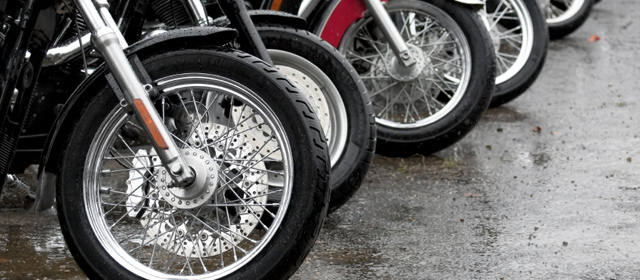IAM offers safety tips to motorcyclists

This week’s tips from the IAM’s head of driving standards, Peter Rodger, are offering advice to motorcyclists about how to minimise the risk of an accident.
Here are Peter’s top tips to ensure you stay safe on the road.
- Staying visible at all times is extremely important. Hi-visibility clothing is useful during the day, but be aware of the limitations when yellow clothing blends into a similar background colour such as rapeseed oil crop. Lateral movement is easier to pick up with the human eye, if you think you have not been seen move sideways a little, if it is safe to do so.
- At night ensure you’re wearing clothing with reflective material on the sleeves. Be aware that your headlamp may blend in with those of the vehicles behind you. Twin headlamps close-up can sometimes be perceived as car headlamps – never rely on the expectation that you will be easily seen.
- Drivers may not check their blind spot before making a manoeuvre. Prepare for this by always leaving enough space for the car in front so they can see you clearly, and if you are travelling at the same speed, sit where you can see the driver’s face in the mirror. Lorries and buses in particular will have more difficulty seeing you from their side mirrors given the height of the vehicles, and this works particularly well with them.
- Always plan ahead before approaching a junction by anticipating concealed side roads or bends in the road. Also, keep to a safe speed as there may be delays at the junction that require you to slow down. You must always ride so you can stop on your own side of the road in the distance you can see to be clear.
- Accidents occur when motorbikes filter through traffic rapidly. Only filter when surrounding traffic is travelling at less than 25mph, and then only exceed their speed by 10 to 15mph if it is safe to do so and within the speed limit for the road you are travelling on.
- Consider carefully before overtaking any vehicle when there are side entrances on the right. This is also important in relation to tractors and other farm vehicles. They often pull into field entrances that are not detectable by other road users. Be patient and only overtake when you have maximum visibility.
- You never know what lies ahead as you approach a bend; manage your speed carefully before you get to the bend itself. Whether it’s a vehicle, a pedestrian or slippery road conditions, anticipate for the worst by slowing down if you can’t see around the corner. Remember, the higher the speed the less time you have to react to a hazard.
- Remember you are sharing the road with other people who also need to get somewhere. Be mindful of how your riding may affect others. Never tailgate in the hope that other motorists speed up and avoid road-rage at all times.
Peter said, ‘Being prepared for what might develop is a huge key to being safe on two wheels. In town, make sure you’re seen and don’t assume people can see you. On country roads, avoid running into trouble on bends by always being in a position to stop on tarmac you can see is safe. Try to be as predictable as possible and I’m sure your ride will be a sweet one.’






